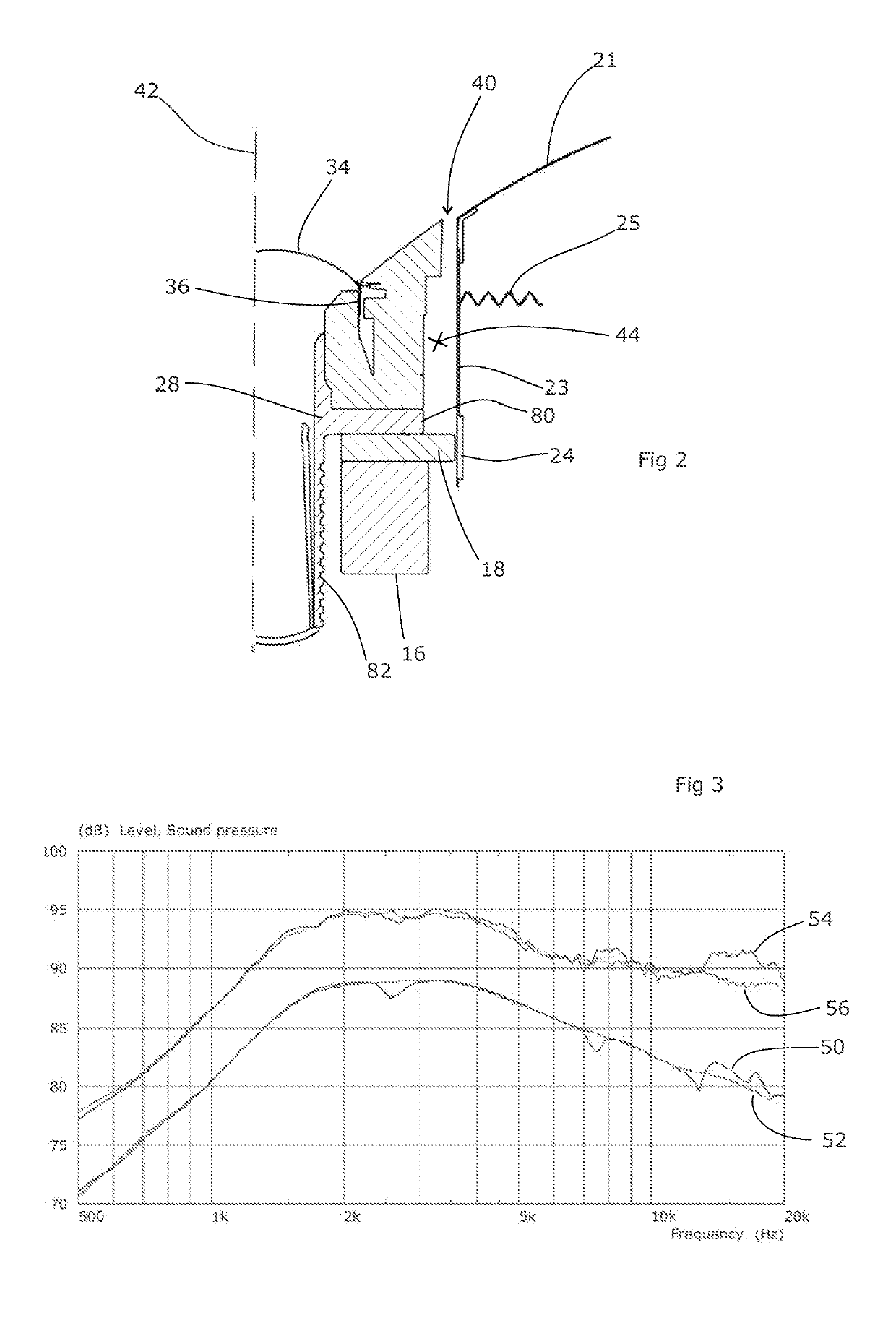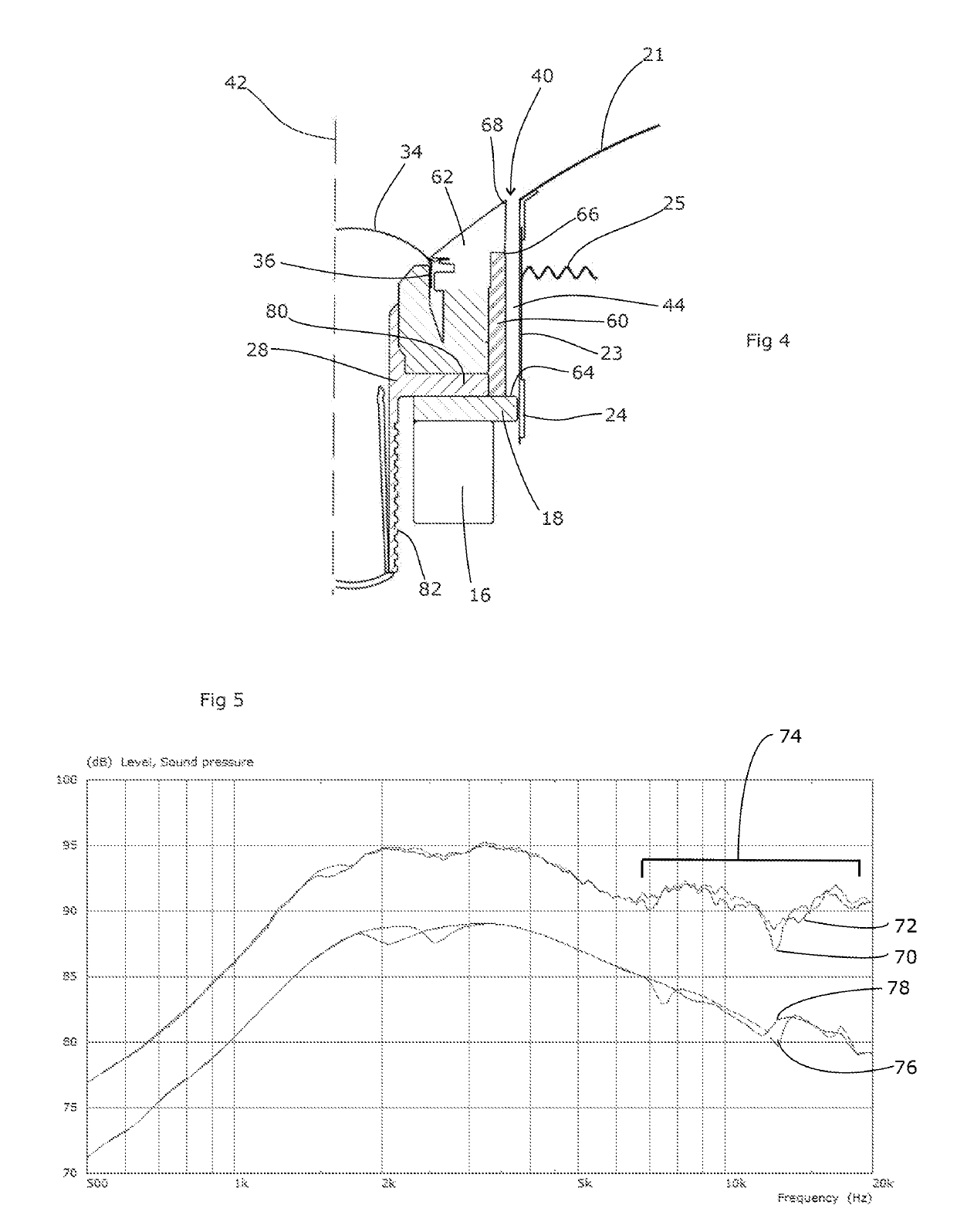Loudspeaker
- Summary
- Abstract
- Description
- Claims
- Application Information
AI Technical Summary
Benefits of technology
Problems solved by technology
Method used
Image
Examples
Embodiment Construction
[0029]FIG. 4 shows a first embodiment of the invention. This shares several features with the arrangement of FIG. 2, and like reference numerals are used to denote like parts. The embodiment differs from the arrangement of FIG. 2 in that an annular sleeve of sound-absorbent material 60 in the form of acoustic foam has been fitted around the tweeter unit. This sits in the space between the outer trim 62 of the tweeter unit and the voice coil former 23 of the midrange unit, and effectively lines one side of the annular channel 44 from its deepest point 64 up to a point 66 just behind a ledge 68 of the outer trim 62. The ledge 68 thus conceals the sound-absorbent material 60 from view.
[0030]Sound vibrations entering into the annular channel 44 will therefore be damped, and thus will have a reduced effect on the loudspeaker response. FIG. 5 illustrates measurements comparing the tweeter according to FIG. 2 but with a rigid card sleeve in the annular space 44 (line 70), and the tweeter o...
PUM
 Login to View More
Login to View More Abstract
Description
Claims
Application Information
 Login to View More
Login to View More - R&D
- Intellectual Property
- Life Sciences
- Materials
- Tech Scout
- Unparalleled Data Quality
- Higher Quality Content
- 60% Fewer Hallucinations
Browse by: Latest US Patents, China's latest patents, Technical Efficacy Thesaurus, Application Domain, Technology Topic, Popular Technical Reports.
© 2025 PatSnap. All rights reserved.Legal|Privacy policy|Modern Slavery Act Transparency Statement|Sitemap|About US| Contact US: help@patsnap.com



